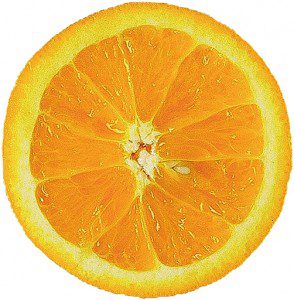By Sayer Ji
Contributing writer for Wake Up World
Vitamin C is generally considered to be an important “nutrient,” but its perceived value usually ends there. Only rarely does the public (and the medical profession) glimpse its true potential in the prevention and treatment of disease — and this because, by legal definition (in the US), only FDA-approved drugs can prevent, treat and cure disease.
This does not mean, however, that essential nutrients like Vitamin C cannot in fact prevent and treat disease, i.e. only because it is illegal to speak truthfully about something, doesn’t mean that that something isn’t true. The National Library of Medicine, in fact, contains thousands of studies demonstrating vitamin C’s ability to significantly improve health, with 220 disease applications documented on the research site GreenMedInfo.com alone.
The best thing ‘we the people’ can do, despite our lack of medical degrees and licensure, and without the FDA’s iron-fisted legal and regulatory apparatus on our side, is to use the peer-reviewed research at our disposal to inform and protect our treatment decisions.
[pro_ad_display_adzone id=”110028″]
Perhaps we must revisit an important moment in history to regain a sense of how profoundly vitamin C deficiency and vitamin C therapy can affect health. James Lind (1716-1794), pioneer of naval hygiene in the British Royal Navy, conducted the first ever clinical trial proving that citrus fruits cured scurvy. Lind’s discovery saved tens of thousands of seamen from the ravages of scurvy, spurring England’s naval supremacy, putatively changing the course of world history.
If significant historical events like these don’t provide enough evidence to vindicate the efficacy of nutrients like Vitamin C, molecular biology and the science of genetics can help to fill in the gaps.
It is a little known and under-appreciated fact that all humans are born with a serious, life-threatening genetic defect: namely, the inability to manufacture Vitamin C.
This defect occurred approximately 63 million years ago, when our haplorrhini (“simple nosed”) primate predecessors lost the gene (Gulnolactone oxidase pseudogene – GULOP), responsible for the manufacture of Vitamin C from glucose.
The ability to synthesize Vitamin C, in fact, has been lost several times in vertebrates, e.g. in guinea pigs, some bats, some fishes, passeriform birds and in primates of the suborder Haplorrhini, which includes monkes, apes and humans.
It was Linus Pauling, two time Nobel Laureate, and the world’s foremost vitamin C proponent, who first brought this inborn error of metabolism to popular light. Pauling advocated taking large doses of Vitamin C (up to 10-12 grams a day) in order to offset the deficiencies of our modern diet. He believed that it was our movement away from a vitamin C rich fruit-and-vegetable based diet that explained the modern epidemic of heart disease.
According to this perspective, without adequate Vitamin C we are unable to produce the collagen necessary to heal our arteries. The Vitamin C starved body compensates for this by increasing the production of a very small and sticky type of cholesterol known as lipoprotein A, which leads to the formation of atheromatous plaque (clogged arteries). Linus Pauling advocated taking large amounts of vitamin C in combination with the amino acid lysine to reverse the damage done to the arteries, and to prevent recurrence.*
Indeed, a study published in 2008 showed that higher plasma vitamin C levels are associated with a significantly reduced risk of stroke. Scientists from the clinical gerontology unit at Addnbrooke’s University Hospital in Cambridge, UK, tracked 20,649 men and women aged 40 to 79 years, between 1993 and 1997. The group was followed through March 2005. Individuals who had the highest vitamin C levels showed a 42% reduction in stroke risk! If you compare this with Plavix’s 8.7 – 9.4% risk reduction, and the profound side effects drugs like these generate, one begins to understand why the media projection of “vitamins are toxic” propaganda serves only the interests of the drug companies.
Before one goes out and buys a bargain bottle of Vitamin C tablets, one should be advised that ascorbic acid is not exactly the same thing as Vitamin C. Ascorbic acid is found within the Vitamin C complex as it exists in food, but is complexed with a wide range of inseparable cofactors, such as rutin, bioflavonoids (vitamin p), protein chaperones, and various enzymes like tyrosinase, which together in their entirety constitute the whole food complex. Take the ‘vitamin c’ as isolated ascorbic acid out of the nutritional context of food and is behaves more like a chemical or drug.
Ascorbic acid is also 10 times more acidic than the naturally buffered Vitamin C found in raw food, and will on occasions lead to stomach upset, calcium loss from the bones, and kidney stones, in susceptible individuals. Traditionally ascorbic acid is produced semi-synthetically from corn or rice starch through a heavily chemical dependent process. Ascorbic acid can be considered no more natural than white flour, and yet despite this fact, has very little toxicity relative to pharmaceuticals, and can be used in much higher doses than the FDA’s Recommended Daily Allowance without adverse side effects.
The difference between ascorbic acid and Vitamin C in whole food form was perfectly clear to Szent-Gyorgi who received a Nobel Prize in 1937 for discovering Vitamin C. Even though Szent-Gyorgi received international recognition for identifying ascorbic acid as Vitamin C, his later research lead him to conclude that ascorbic acid had very little anti-scurvy activity in and of itself. Szent-Gyorgi found that the vitamin C found in organ meats and food sources like paprika, where the aforementioned cofactors are intact, were far superior in combating scurvy.
We would be well served to acknowledge that all raw fruits and vegetables contain a “life force” that can not be fully decomposed or reduced to the chemical skeleton within which the life force of “vitamin activity” works, no more than our life/soul can be reduced to the $10 or so worth of chemical building blocks that our body is composed of. Fortunately there are vitamin manufacturers out there who acknowledge this fact, and produce raw whole food concentrates rich in vitamin activity. When eating raw, organic fruits and vegetables is not an option, or when higher levels are needed, these supplements offer authentic therapeutic activity.
The history of vitamin C illustrates just how profoundly important it is for us to get these vital nutrients known as “vitamins,” and that they are best derived from food. If we choose to overlook the importance of vitamins in maintaining health, and yes, even preventing and reversing disease, we will be forced to accept a pharmaceutically driven medical perspective that believes that health is the absence of symptoms, and that symptoms are to be combated or driven back deep into our bodies with sublethal dosages of toxic chemicals, i.e. drugs. Such as perspective on disease is itself so diseased that there is no escaping the ill health that results from it. We must remember that there has never been a disease that has been caused by a lack of a drug… therefore, why would it ever be considered sound medical practice to treat disease with drugs, as a first line of treatment?
*If Linus Pauling and other Vitamin C researchers are correct and a deficiency of Vitamin C causes the breakdown of collagen in the artery, aspirin therapy, which causes Vitamin C deficiency, would not be considered a safe way to reduce cardiac mortality. To the contrary, it would further destabilize the strength and elasticity of the artery leading to hemorrhage, which is the primary deadly side effect of aspirin therapy.
Updated August 2014
Further articles by Sayer Ji:
- Biophotons: The Human Body Emits, Communicates with, and is Made from Light
- Black Seed Extract ‘Cures’ HIV Patient Naturally
- 3 Evidence-Based Ways To Reverse Skin Aging Naturally
- How to Clean Your Arteries With One Simple Fruit
- 13 Evidence-Based Medicinal Properties of Coconut Oil
- Amazing Food Science Discovery: Edible Plants ‘Talk’ To Animal Cells, Promote Healing
- Splenda Found To Have Possible Neurotoxic Properties In Animal Study
- The Spice That Prevents Fluoride From Destroying Your Brain
- Turmeric Beats Ibuprofen for Arthritis of the Knee
- Live Flu Vaccines Increase Infectious Bacteria Counts 100-Fold in Mice
- FAIL: Another Mammography Study Finds They Don’t Save Lives
- The 2013 Measles Outbreak: A Failing Vaccine, Not A Failure To Vaccinate
- The Cancer-Causing Metal Millions Eat, Wear or Have Injected Into Their Kids
About the author:
 Sayer Ji is an author, educator, Steering Committee Member of the Global GMO Free Coalition (GGFC), advisory board member of the National Health Federation, and the founder of GreenMedInfo.com – an open access, evidence-based resource supporting natural and integrative modalities. His writings have been published and referenced widely in print and online, including Truthout, Mercola.com, The Journal of Gluten Sensitivity, New York Times and The Well Being Journal.
Sayer Ji is an author, educator, Steering Committee Member of the Global GMO Free Coalition (GGFC), advisory board member of the National Health Federation, and the founder of GreenMedInfo.com – an open access, evidence-based resource supporting natural and integrative modalities. His writings have been published and referenced widely in print and online, including Truthout, Mercola.com, The Journal of Gluten Sensitivity, New York Times and The Well Being Journal.
In 1995 Sayer received a BA degree in Philosophy from Rutgers University, where he studied under the American philosopher Dr. Bruce W. Wilshire, with a focus on the philosophy of science. In 1996, following residency at the Zen Mountain Monastery in upstate New York, he embarked on a 5 year journey of service as a counsellor-teacher and wilderness therapy specialist for various organizations that serve underprivileged and/or adjudicated populations. Since 2003, Sayer has served as a patient advocate and an educator and consultant for the natural health and wellness field.
Visit GreenMedInfo online and on Facebook, or sign up for GreenMedInfo’s Newsletter.
[pro_ad_display_adzone id=”110027″]
Disclaimer: This article is not intended to provide specific medical advice, diagnosis or treatment.







